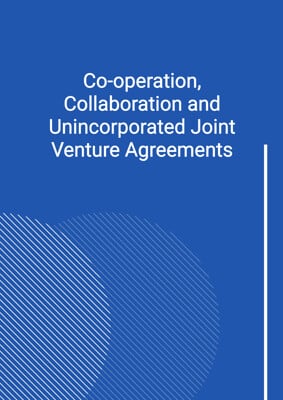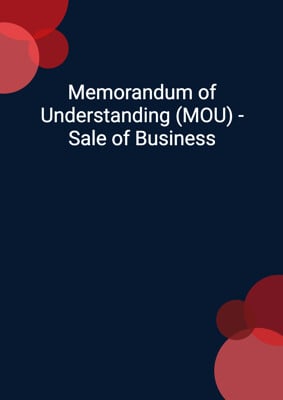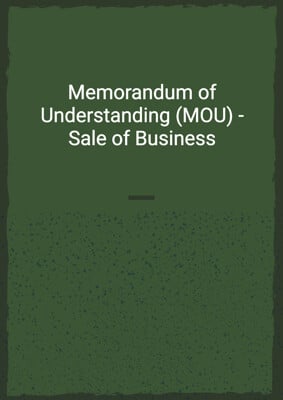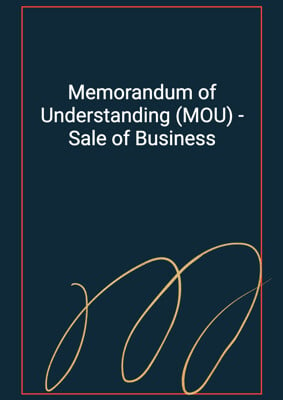How to Tailor the Document for Your Need?
01
Create Document
Fill in the details of the parties. You can click the "Fill with Member’s Information" button to complete it with information saved to your account.
02
Fill Information
Please fill in any additional information by following the step-by-step guide on the left hand side of the preview document and click the "Next" button.
03
Get Document
When you are done, click the "Get Document" button and you can download the document in Word or PDF format.
04
Review Document
Please get all parties to review the document carefully and make any final modifications to ensure that the details are correct before signing the document.
Document Preview
Document Description
The document titled 'Letter of Intent (LOI) - Joint Venture (Simple)' is a letter of intent between two parties, Party 1 and Party 2, who intend to form a joint venture company. The purpose of this letter is to outline the current understanding of the parties regarding the proposed joint venture and serve as the basis for further negotiations and the preparation of a feasibility study report, a joint venture contract, and articles of association.
The document begins with a brief introduction, stating the intention of Party 1 and Party 2 to establish an equity joint venture company with limited liability. It emphasizes the importance of this letter of intent in setting forth the initial understanding of the parties.
The first section of the document focuses on the form and name of the joint venture company. It states that the joint venture will be a limited liability company formed in accordance with the laws of the country and will be named 'JVC'.
The second section highlights the purpose of the joint venture, which is to engage in the distribution and sale of a specific product, as well as other activities agreed upon by the parties.
Moving on, the third section discusses the business scope and scale of the joint venture. It states that the products and production scale will be determined by the board of directors, and the anticipated quantity to be distributed annually is specified.
The fourth section addresses the total investment and registered capital of the joint venture. It provides an estimated total investment amount and registered capital, which will be defined in the joint venture contract.
The fifth section explains the form of investment by each party. It outlines the contributions of Party 1 and Party 2, which may include distribution rights, technology, trademark, patent, design, intellectual property rights, and cash. The specific contributions and their valuation will be agreed upon by the parties and confirmed by an independent evaluation institution.
The sixth section discusses the distribution channel of the joint venture. If applicable, it mentions the involvement of a distributor in assisting with the distribution of the joint venture's products and specifies that the distributor should not make a profit from the joint venture.
The seventh section addresses the possibility of obtaining loans to fund the joint venture's requirements. It states that if feasible, loans will be borrowed in the name of the joint venture, and any required security will be provided by the joint venture.
The eighth section covers the potential increase in registered capital in the future. It states that if the board of directors decides to expand and increase registered capital, each party will have the option to increase its contribution proportionally to maintain its original share.
The ninth section explains the profit-sharing arrangement. It states that profits will be distributed to the parties in proportion to their share of the registered capital of the joint venture.
The tenth section addresses the sales strategy of the joint venture. Depending on the decision of the board, the joint venture will either sell its products in the domestic market or in both the domestic and international markets.
The eleventh section focuses on the management structure of the joint venture. It states that the board of directors will be the governing body and will decide major issues. Day-to-day management will be carried out by the general manager under the board's direction. The composition of the board, including the number of directors appointed by each party, is specified.
The twelfth section emphasizes the importance of confidentiality. Both parties agree to keep all information, documents, and data disclosed by the other party strictly confidential, except for the purpose of establishing the joint venture. The disclosure of negotiations to third parties is limited.
If applicable, the thirteenth section specifies the term of the joint venture and mentions the possibility of negotiating an extension before termination.
The fourteenth section outlines the next steps in the process. It states that the final terms of the joint venture contract will be subject to the approval of the boards of directors of Party 1 and Party 2. The parties will conduct a feasibility study, draft a joint venture contract, and negotiate the terms.
If applicable, the fifteenth section addresses the issue of third-party interference. It states that neither party shall enter into discussions with a third party regarding a joint venture for the distribution of the product in the country before a certain period.
The sixteenth and final section briefly mentions dispute resolution and includes a jurisdiction clause. The document is signed by the authorized representatives of Party 1 and Party 2.
In summary, this document serves as a detailed letter of intent outlining the understanding and intentions of Party 1 and Party 2 regarding the formation of a joint venture company. It covers various aspects such as the form and name of the joint venture, its purpose, business scope, investment, distribution channel, management structure, confidentiality, and next steps in the process.
How to use this document?
Step-by-step guidance for using the 'Letter of Intent (LOI) - Joint Venture (Simple)':
1. Review the document: Familiarize yourself with the content and purpose of the letter of intent. Understand that it serves as an initial agreement between Party 1 and Party 2 to form a joint venture company.
2. Customize the document: Replace the placeholders such as 'Party 1 name,' 'Party 1 address,' 'Party 2 name,' and 'Party 2 address' with the actual names and addresses of the parties involved.
3. Understand the purpose and scope: Note that the joint venture will engage in the distribution and sale of a specific product, as well as other agreed-upon activities. Ensure that both parties are aligned on the purpose and scope of the joint venture.
4. Determine the total investment and registered capital: Discuss and agree upon the estimated total investment and registered capital of the joint venture. These details will be defined in the joint venture contract.
5. Decide on the form of investment: If applicable, determine the contributions of each party, which may include distribution rights, technology, trademark, patent, design, intellectual property rights, and cash. Agree on the valuation of these contributions.
6. Consider the distribution channel: If a distributor is involved, negotiate the terms of their assistance in the distribution of the joint venture's products. Ensure that the distributor's fees are based on costs and that they do not make a profit from the joint venture.
7. Explore loan options: Investigate the feasibility of obtaining loans to fund the joint venture's requirements. If loans are feasible, determine the terms and conditions, and ensure that any required security is provided by the joint venture.
8. Discuss potential increase in registered capital: Consider the possibility of expanding the joint venture in the future and increasing the registered capital. Decide whether each party will have the option to increase their contribution proportionally.
9. Agree on profit sharing: Determine how profits will be distributed to the parties based on their share of the registered capital of the joint venture. Discuss and agree upon the specific profit-sharing arrangement.
10. Define the sales strategy: Decide whether the joint venture will sell its products only in the domestic market or in both the domestic and international markets. Ensure that the decision aligns with the goals and objectives of the joint venture.
11. Establish the management structure: Determine the composition of the board of directors, including the number of directors appointed by each party. Clarify the roles and responsibilities of the board and the general manager in the day-to-day management of the joint venture.
12. Maintain confidentiality: Emphasize the importance of keeping all information, documents, and data disclosed by the other party strictly confidential. Ensure that both parties understand and agree to the confidentiality obligations.
13. Consider the term of the joint venture: If applicable, discuss and agree upon the duration of the joint venture. Determine whether there will be an option to negotiate an extension before termination.
14. Proceed with next steps: Understand that the final terms of the joint venture contract will be subject to the approval of the boards of directors of Party 1 and Party 2. Collaborate on conducting a feasibility study, drafting the joint venture contract, and negotiating the terms.
15. Avoid third-party interference: If applicable, agree not to enter into discussions with third parties regarding a joint venture for the distribution of the product in the country before a certain period. Focus on maintaining exclusivity and protecting the interests of both parties.
16. Address dispute resolution: Understand the jurisdiction clause included in the document. Discuss and agree upon the preferred method of resolving any potential disputes that may arise during the joint venture.
Note: This guidance provides a general overview of how to use the document. It is important to consult legal professionals and adapt the document to the specific needs and requirements of the parties involved.
Not the right document?
Don’t worry, we have thousands of documents for you to choose from:

























